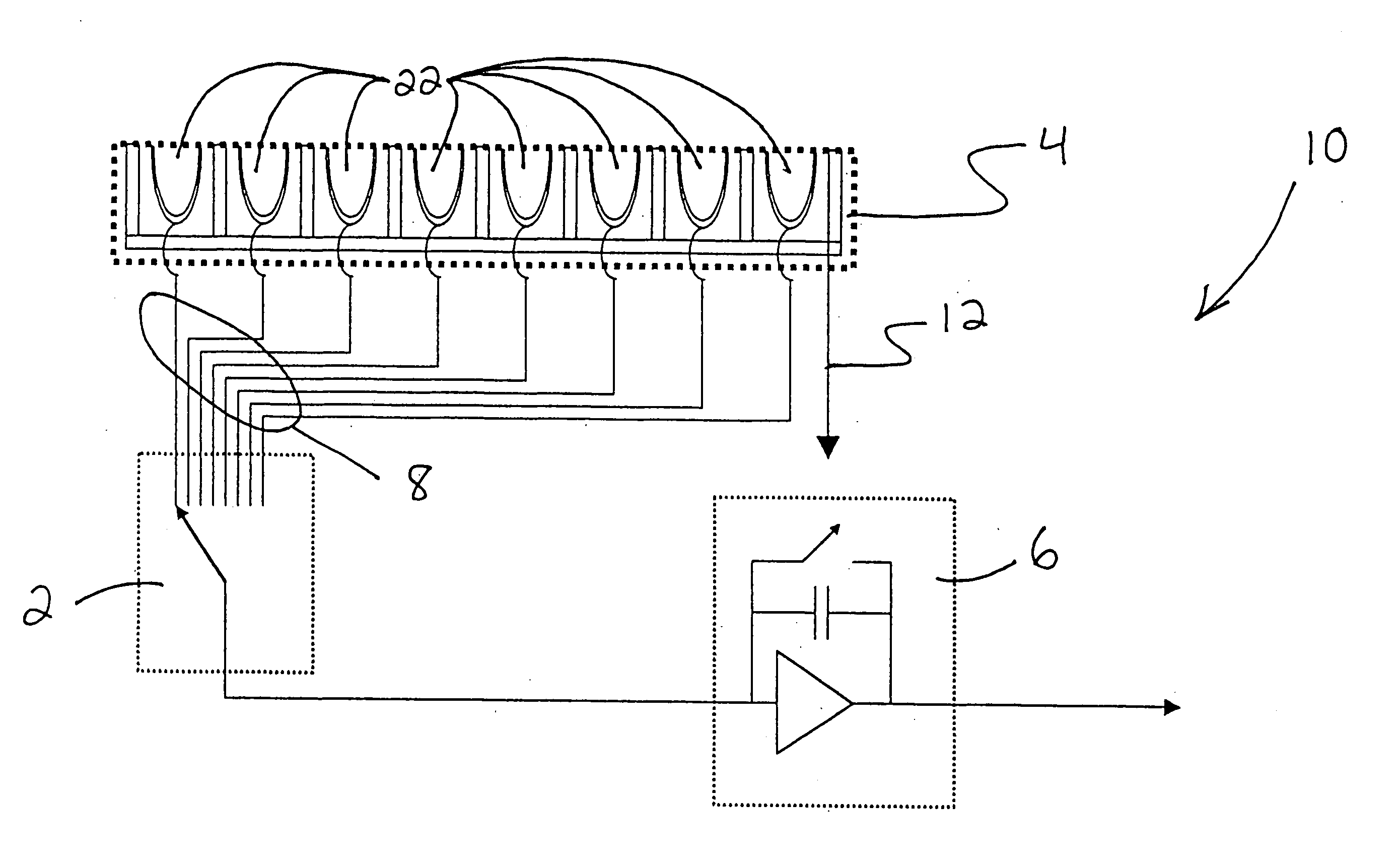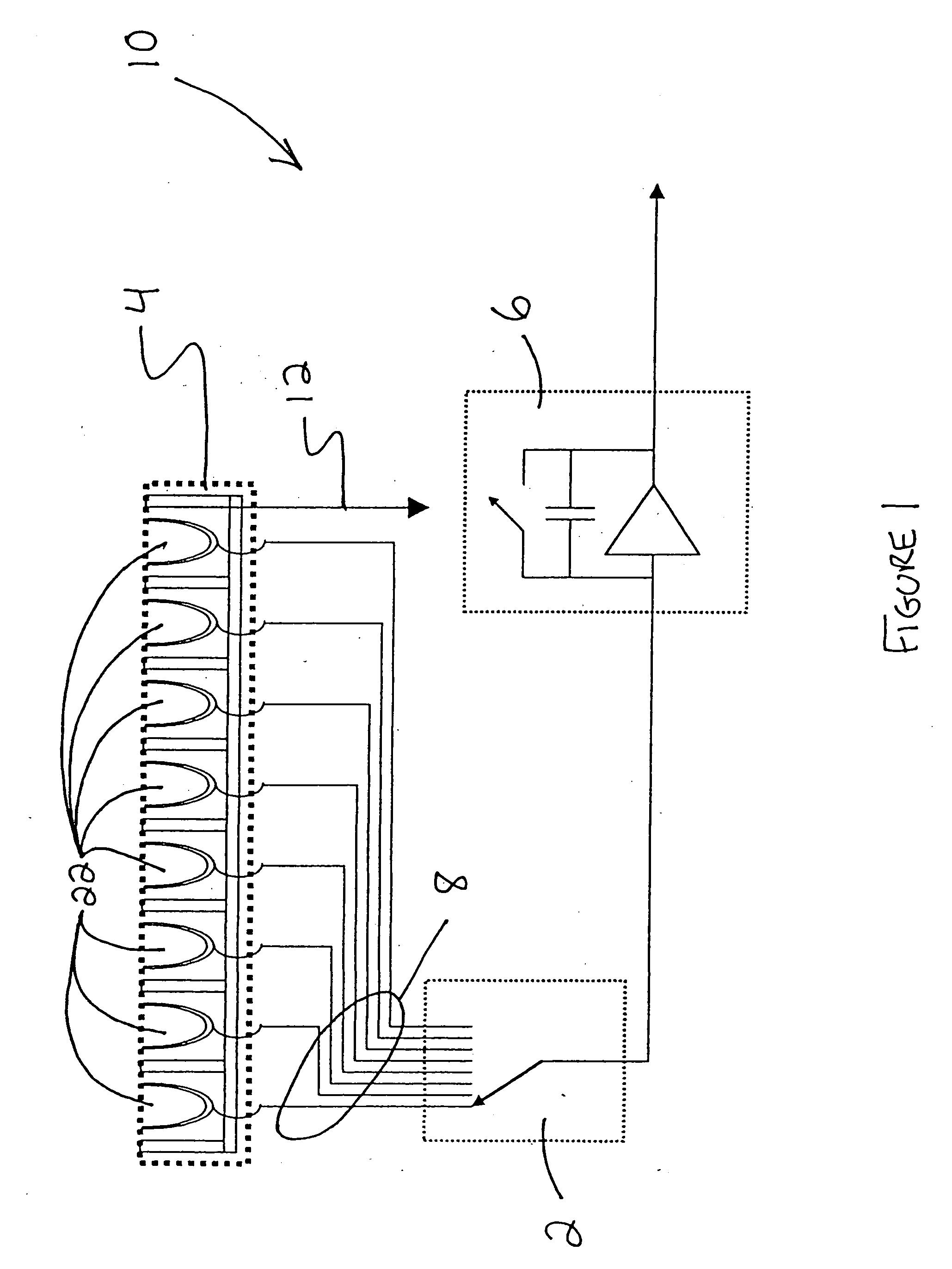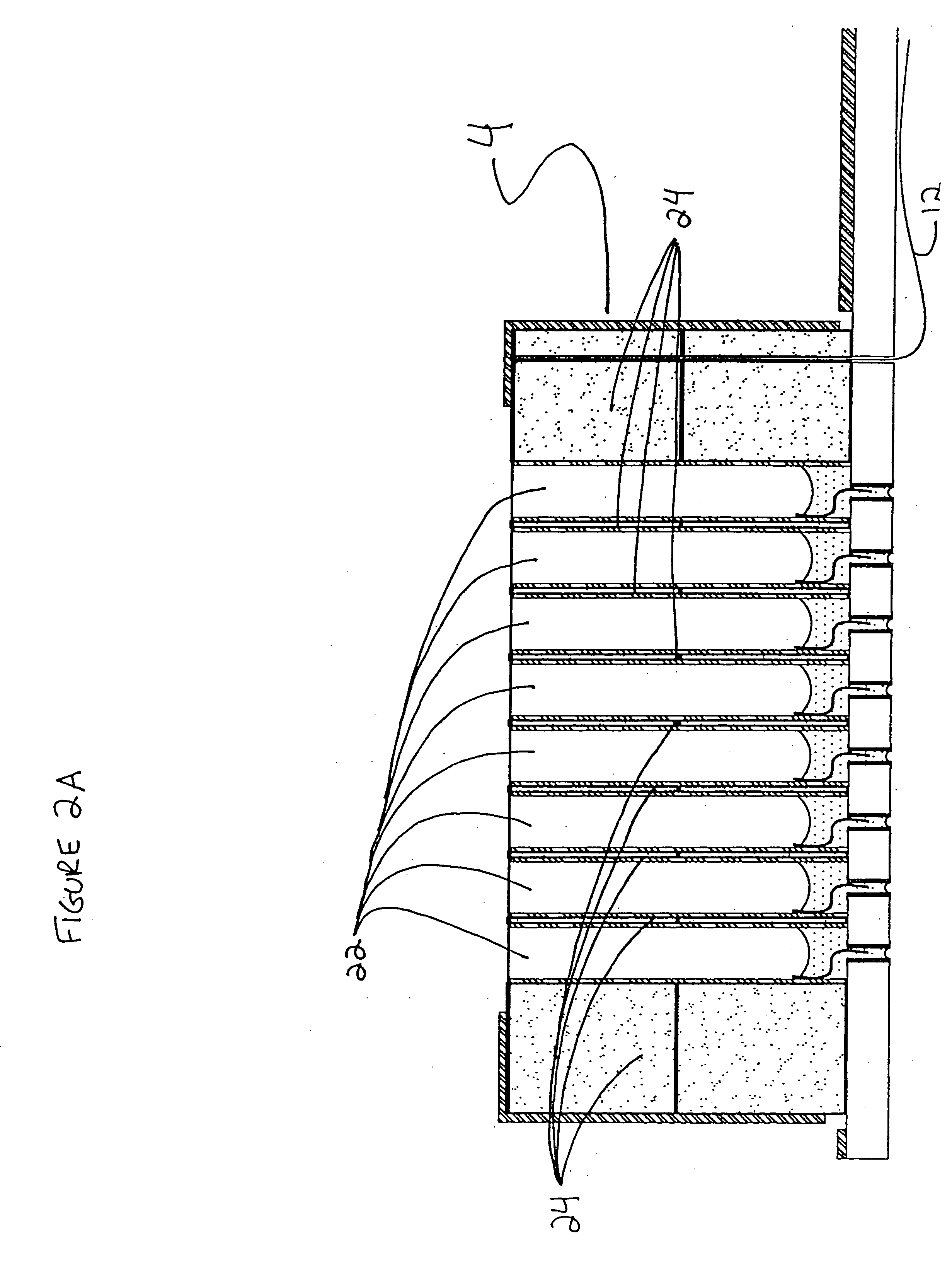Charged particle beam detection system
a particle beam and detection system technology, applied in the field of chargeable particle beam detection system, can solve the problems of low accuracy, low cost, and ruggedness of faraday cups, and achieve the effects of low cost, high spatial resolution, and simplified array technology
- Summary
- Abstract
- Description
- Claims
- Application Information
AI Technical Summary
Benefits of technology
Problems solved by technology
Method used
Image
Examples
Embodiment Construction
[0050] The present invention provides a Faraday cup detector array (FCDA) for charged particle beam detection. The detector being an array of Faraday cups means that the detector is position sensitive. By combining the FCDA with a properly synchronized electronic multiplexing unit (MUX), the resulting instrument has the unique capability to simultaneously monitor the entire array of Faraday cups with a duty cycle approaching 100%. The high duty cycle is achieved by collecting the ions with a large number of small, electronically decoupled Faraday cups. Because Faraday cups collect incident ions independent of their charge state, each cup is both a charged particle collector and a charge integrator. The ability of a Faraday cup to integrate the charge, in combination with the electronic multiplexing unit, which quickly reads out (and empties) the cups compared to the charge integration time of the array, provides the almost perfect duty cycle for such position-sensitive charged parti...
PUM
| Property | Measurement | Unit |
|---|---|---|
| ion currents | aaaaa | aaaaa |
| unit cell size | aaaaa | aaaaa |
| diameter | aaaaa | aaaaa |
Abstract
Description
Claims
Application Information
 Login to View More
Login to View More - R&D
- Intellectual Property
- Life Sciences
- Materials
- Tech Scout
- Unparalleled Data Quality
- Higher Quality Content
- 60% Fewer Hallucinations
Browse by: Latest US Patents, China's latest patents, Technical Efficacy Thesaurus, Application Domain, Technology Topic, Popular Technical Reports.
© 2025 PatSnap. All rights reserved.Legal|Privacy policy|Modern Slavery Act Transparency Statement|Sitemap|About US| Contact US: help@patsnap.com



